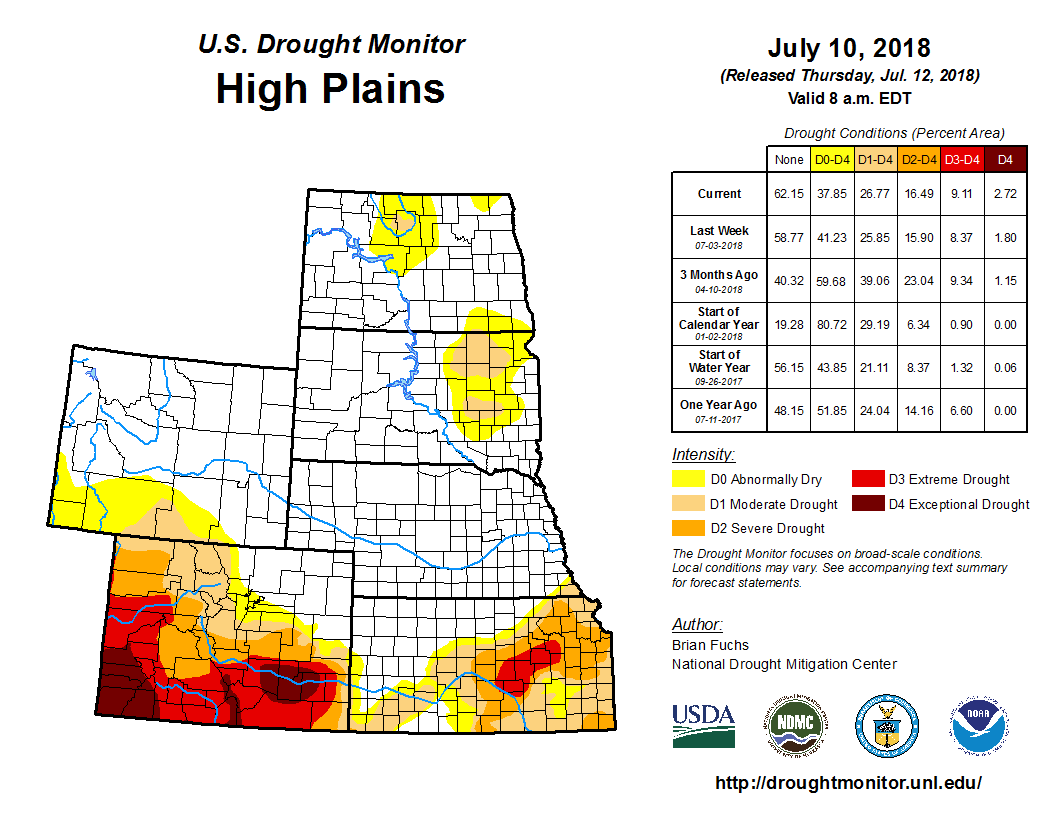According to the July 10 U.S. Drought Monitor released July 12, an active summer pattern continued over the central and northern Plains and into the upper Midwest, with several areas seeing well above normal precipitation associated with thunderstorms. Along the Gulf Coast from Texas to Florida, precipitation was plentiful and widespread as ample moisture continued to be transported into the region. The precipitation along the Gulf also helped to keep temperatures 1 to 3 degrees cooler than normal for this time of year. Some monsoon activity started up in the Southwest with some scattered precipitation while most of the rest of the West remained warm and dry with an increase in fire danger and active fires throughout the region.
An active thunderstorm pattern helped to bring ample precipitation to North Dakota, northern South Dakota, central and eastern Nebraska, and portions of western Kansas. The precipitation last week along with recent rains has allowed for improvements in the Dakotas. Severe drought was eliminated from both North and South Dakota while abnormally dry and moderate drought conditions contracted as well. All of the abnormally dry conditions were eliminated from northwest South Dakota and southwest North Dakota. Eastern Kansas remained dry and severe drought expanded through northeast Kansas and was introduced into southeast Kansas while moderate drought expanded as well. Southwest Kansas had a full category improvement to drought conditions this week as the recent wetness has helped improve drought in this part of the state. In Nebraska, the recent rains in June and early July did not impact all of the state equally and portions of southern Nebraska are starting to show lingering impacts due to dryness going back to the autumn of 2017. This area will need to be monitored closely for development in the coming weeks.
Portions of southeast Colorado improved this week in response to the recent wet pattern, but a new area of exceptional drought was introduced in eastern Colorado as conditions have been rapidly worsening in both the short and long term.

